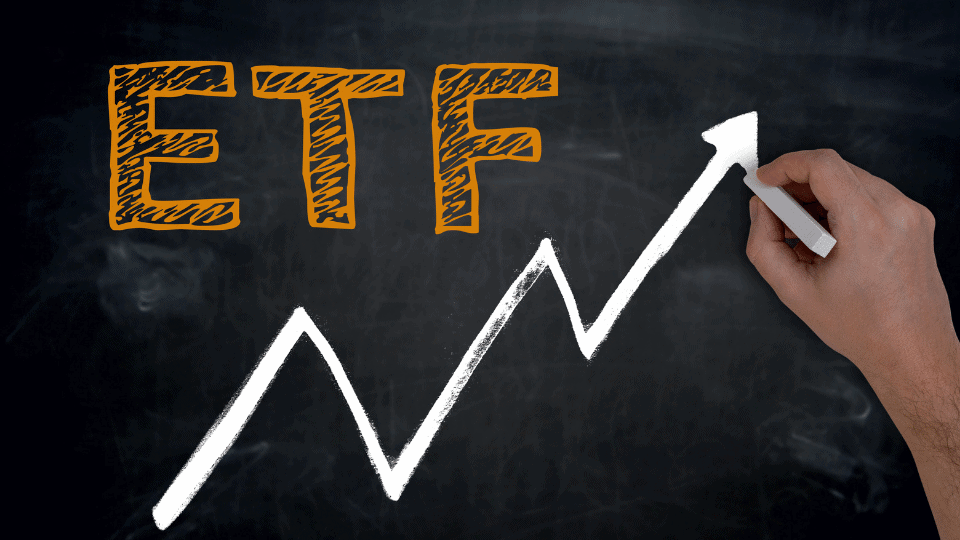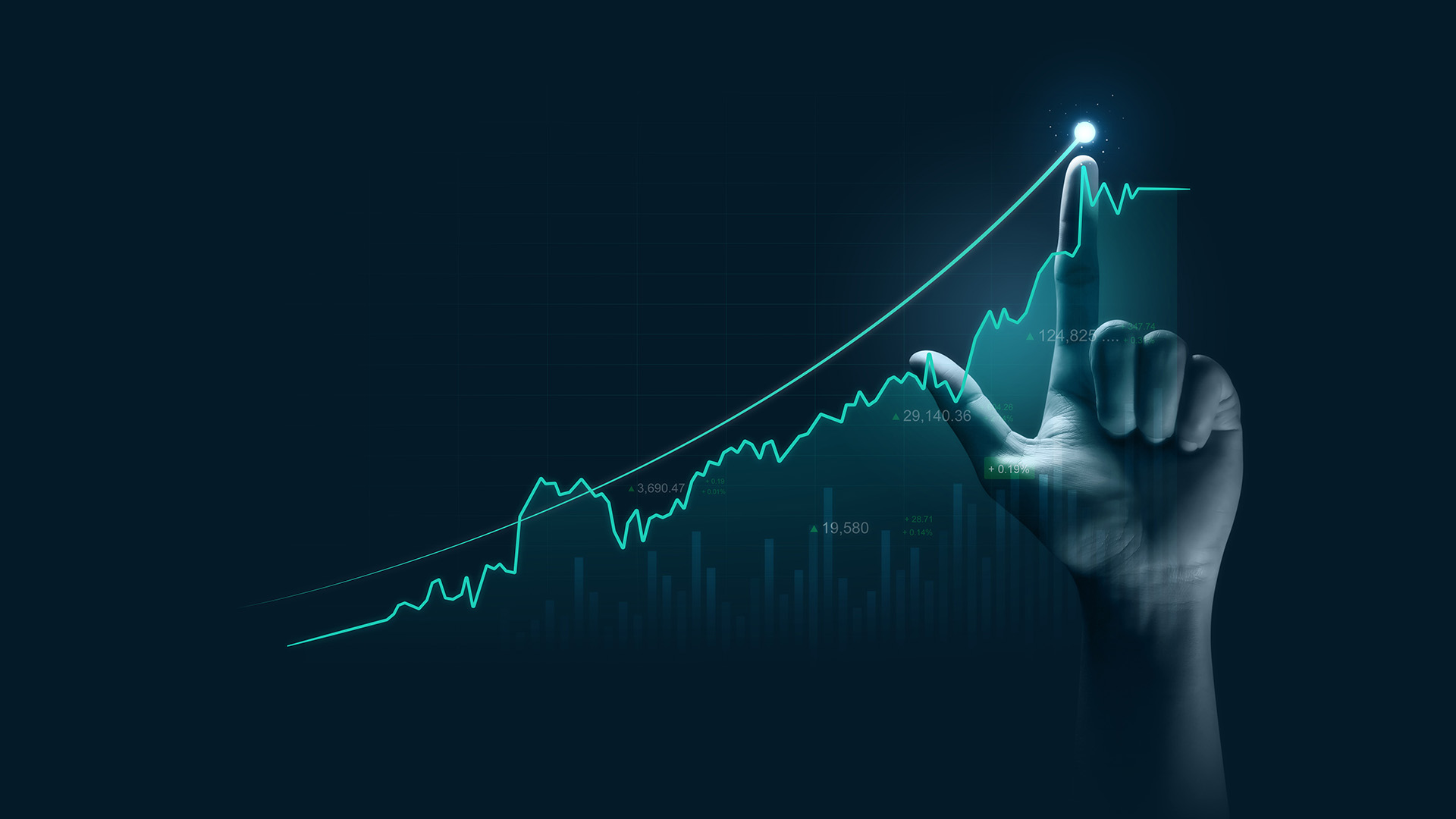Are you looking to invest in the ever-growing world of Exchange Traded Funds (ETFs)? Our comprehensive guide will help you navigate through understanding ETFs, their benefits, comparisons with mutual funds, costs involved, and choosing the right one for your portfolio. So let’s dive in and unwrap the exciting world of ETF investing!
Short Summary
ETFs offer investors a cost-efficient, diversified and tax-advantaged way to invest in multiple asset classes.
ETFs differ from mutual funds in trading mechanics, expense ratios and tax efficiency.
Beginner investors should consider factors such as costs, liquidity & tracking error when selecting the right ETF for their portfolio.

Understanding ETFs
Exchange Traded Funds (ETFs) have become a popular investment vehicle, offering a simple way to diversify your portfolio. Unlike individual stocks, ETFs hold a variety of underlying assets, such as stocks, bonds, or commodities, providing investors with the opportunity to spread their investments across multiple asset classes.
Imagine having a basket filled with various fruits, representing different investments, rather than just one type of fruit, which represents a single investment. This basket of investments can be bought and sold during market hours on stock exchanges, providing the flexibility of stocks with the diversification benefits of mutual funds.
Definition and Function
So what exactly is an ETF? An Exchange Traded Fund (ETF) is a collection of securities that can be purchased or sold through a brokerage firm on a stock exchange. ETFs function like a hybrid between stocks and mutual funds; they are traded on exchanges like stocks, with their prices fluctuating throughout the trading day.
With most ETFs, the fund provider designs a fund to track the performance of a specific index, such as the S&P 500, and offers shares in that fund to investors. This allows investors to gain exposure to a broad range of assets without having to buy individual stocks, thus reducing the risk associated with stock-specific events.
Trading Mechanics
What makes ETFs unique is their trading mechanics. Unlike mutual funds, which are priced once per day, ETFs trade like stocks on an exchange, with their prices changing throughout the trading day. This allows investors to buy and sell ETFs whenever the stock market is open, providing greater flexibility and control over their investments.
Imagine being able to adjust your investment portfolio in real-time, responding to market fluctuations and seizing opportunities as they arise. With ETFs, this level of control is at your fingertips.
Components of an ETF
An ETF comprises various components, such as the underlying assets (stocks, bonds, commodities, or currencies), the fund provider who owns the assets and designs the fund, and dividends paid to investors. This structure allows investors to gain exposure to a wide range of assets through a single investment vehicle, ensuring diversification and reducing the risk associated with individual securities.
For example, a stock ETF may track a specific industry or sector, providing investors with exposure to the potential growth of that industry without having to buy individual stocks. This makes ETFs an attractive option for both new and experienced investors alike.
Benefits of Investing in ETFs
The numerous benefits of investing in ETFs have contributed to their widespread popularity. These advantages include cost efficiency, diversification opportunities, and tax advantages. By offering access to a broad range of asset classes at a lower cost than traditional mutual funds, ETFs enable investors to build a diversified portfolio while keeping fees to a minimum.
Additionally, ETFs are more tax-efficient than mutual funds, making them an attractive option for investors looking to minimize their tax burden. All these benefits make ETFs an ideal option for beginner investors who want an accessible, cost-effective way to enter the world of investing.
Cost Efficiency
One of the primary benefits of ETF investing is cost efficiency. ETFs typically have lower expense ratios than their mutual fund counterparts, which means investors pay less in fees. The expense ratio is the ongoing management fee charged by the ETF provider, and lower ratios result in more of your money being invested rather than lost to fees.
Furthermore, ETFs do not impose 12b-1 fees and have fewer operational expenses than mutual funds, which translates to even lower costs for investors. This makes ETFs an attractive choice for cost-conscious investors looking to maximize their returns.
Diversification Opportunities
Diversification is a fundamental principle of investing, as it helps mitigate risk and enhance returns. ETFs offer excellent diversification opportunities, providing investors with exposure to various sectors, regions, and asset classes through a single investment vehicle.
By spreading their investments across multiple assets, investors can reduce the impact of underperforming investments and increase the potential for higher returns. For example, an investor can diversify their portfolio by investing in a mix of equity, fixed-income, and commodity ETFs, thus reducing the overall risk and enhancing the potential for long-term growth.
Tax Advantages
Another benefit of investing in ETFs is their tax efficiency. Unlike mutual funds, which are subject to capital gains taxes when the fund manager sells securities within the fund, ETFs are not subject to capital gains taxes until the ETF is sold. This means that investors in ETFs can defer taxes until they decide to sell their investment, providing greater control over their tax situation.
In addition, ETFs are generally more tax-efficient than actively managed mutual funds due to their lower turnover and more efficient trading strategies. This tax advantage makes ETFs an even more attractive option for investors looking to minimize their tax burden.
Comparing ETFs and Mutual Funds
While ETFs and mutual funds share some similarities, such as both providing exposure to a diversified portfolio of investments, there are key differences between the two that make ETFs a more attractive option for many investors. One of the main differences lies in their trading mechanics; ETFs trade like stocks on an exchange and can be bought or sold intraday at different prices, whereas mutual funds trade once a day at a single price.
Additionally, ETFs typically have lower expense ratios and are more tax-efficient than mutual funds. By understanding these differences, investors can make informed decisions about which investment vehicle is best suited to their needs and objectives.
Common Features
While ETFs and mutual funds have their differences, they also share some common features. Both investment vehicles provide investors with access to a professionally managed, diversified portfolio of investments. This means that investors can gain exposure to a broad range of assets through a single investment, reducing the risk associated with individual securities.
Additionally, both ETFs and mutual funds consist of professionally managed collections of individual stocks or bonds, allowing investors to benefit from the expertise of experienced portfolio managers.
Trading Differences
One of the key differences between ETFs and mutual funds lies in their trading mechanics. ETFs trade like stocks on an exchange, with their prices fluctuating throughout the trading day, allowing investors to buy and sell them whenever the stock market is open. This provides greater flexibility and control over their investments, as they can adjust their portfolio in real-time in response to market fluctuations.
In contrast, mutual funds are only traded once a day at the end of the trading day, with their prices based on their net asset value (NAV). This means that investors in mutual funds have less control over the timing and execution of their trades, which could impact their returns.
Costs Associated with ETF Investing
While ETFs are generally an inexpensive investment option, it’s important to be aware of the various costs associated with ETF investing. These costs include trade commissions, operating expense ratios, bid/ask spreads and premiums.
By understanding these costs, investors can make more informed decisions about which ETFs are best suited to their needs and objectives, ensuring that they are not caught off guard by unexpected fees or charges.
Trade Commissions
When investing in ETFs, investors may be subject to trade commissions, which are fees charged by brokerage firms for executing trades. These commissions can vary depending on the brokerage firm and the specific ETF, but generally do not exceed $20 per trade.
It’s important to be aware of these commissions and factor them into your investment decisions, as they can impact your overall returns. Some brokerage firms, such as Schwab, offer commission-free ETF trades, making it even more cost-effective for investors to trade ETFs.
Operating Expense Ratios
Operating Expense Ratios (OERs) are management fees charged by ETF providers, which cover the costs of managing the fund. These fees are typically lower for ETFs than for mutual funds, with the industry asset-weighted average OER for passively managed ETFs at 0.19% and the asset-weighted average OER for cap weighted Schwab ETFs at just 0.05%.
This means that investors in ETFs pay less in fees, allowing more of their money to be invested and potentially resulting in higher returns over time.
Bid/Ask Spreads and Premiums
In addition to trade commissions and expense ratios, ETF trading costs may also include bid/ask spreads and premiums. The bid/ask spread is the difference between the buying and selling price of an ETF on the exchange, and investors must pay this difference when they buy or sell the ETF.
The premium/discount to net asset value (NAV) is another cost associated with trading ETFs, as investors may be required to pay more or less than the NAV of the ETF depending on market conditions.
Being aware of these costs can help investors make more informed decisions about their ETF investments and better manage their overall portfolio.
Choosing the Right ETF for Your Portfolio
With the ever-growing variety of ETFs available, understanding the differences between them is key to choosing the right one for your investment portfolio. Factors such as cost, liquidity, tracking error, and how well the ETF fits within your overall investment strategy should be considered when selecting an ETF.
In the following sections, we’ll explore the different types of ETFs and the factors to consider when choosing one for your portfolio.
Types of ETFs
There are several types of ETFs available, including equity, fixed-income, commodity, currency, sector, dividend, market-cap index, and specialty ETFs. Equity ETFs track a basket of stocks, such as the S&P 500 or the Dow Jones Industrial Average, while fixed-income ETFs focus on a basket of bonds, such as government or corporate bonds.
Commodity ETFs provide exposure to raw goods like gold, coffee, or crude oil, and currency ETFs track the value of a specific currency or group of currencies.
Understanding the different types of ETFs can help you choose the one that best aligns with your investment objectives and risk tolerance.
Factors to Consider
When selecting an ETF, it’s important to consider factors such as the fund’s expense ratio, liquidity, and tracking error. The expense ratio is the ongoing management fee charged by the ETF provider, with lower ratios resulting in lower fees for investors. Liquidity refers to the ease with which the ETF can be bought or sold on the market, and tracking error measures how closely the ETF’s performance tracks its underlying index.
Additionally, it’s important to ensure that the ETF you choose fits well within your overall investment portfolio and aligns with your investment objectives.

Steps to Invest in ETFs
So, how can you start investing in ETFs? The process is quite straightforward and involves a few simple steps: opening a brokerage account, finding the ETFs you want to invest in, buying the ETF, and holding onto the ETF.
In the following sections, we’ll walk you through each of these steps in more detail, so you can confidently begin investing in ETFs and growing your portfolio.
Opening a Brokerage Account
The first step to investing in ETFs is opening a brokerage account. A brokerage account is a type of financial account that holds investments, such as stocks, bonds, and ETFs. To open a brokerage account, you can choose to work with a robo-advisor or a traditional financial advisor, or you can open an account with an online broker.
Once your account is open, you’ll be able to buy and sell ETFs, along with other investments, as you see fit. We recommend eToro.
Selecting Your First ETFs
When choosing your first ETFs, it’s important to consider factors such as the fund’s performance, fees, and liquidity, as well as how well the ETF fits within your overall investment strategy. You should also research the fund’s underlying holdings to ensure that they align with your investment objectives and risk tolerance.
Popular ETFs for beginner investors include the SPDR S&P 500 ETF (SPY), the Invesco QQQ Trust (QQQ), and the Vanguard Total Stock Market ETF (VTI).
Making the Trade
Once you’ve selected the ETFs you want to invest in, the next step is to make the trade. To buy or sell an ETF, you’ll need to enter the corresponding trading symbol, which is usually a combination of letters and numbers that uniquely identifies the fund.
Be sure to also consider the associated costs, fees, and taxes when trading ETFs, as these can impact your overall returns. With your trade executed, you now own shares in the ETF and can hold onto them for as long as you like, allowing your investment to grow over time.
Popular ETF Examples for Beginners
Some popular ETF examples for beginners include the Vanguard Total Stock Market ETF (VTI), the iShares Core S&P Total U.S. Stock Market ETF (ITOT), and the Schwab U.S. Broad Market ETF (SCHB), due to their low expense ratios and broad exposure to various sectors and asset classes.
These ETFs provide a cost-effective and diversified foundation for a long-term investment portfolio, making them an ideal starting point for new investors.
Expert Insights on ETF Investing
Experts in the field of finance often praise ETFs as an easy way for beginner investors to enter the market and mitigate risk through diversification. By investing in a basket of securities rather than individual stocks, investors can eliminate exposure to individual securities risk and enjoy the benefits of a professionally managed portfolio.
Whether you’re a seasoned investor or just starting your investment journey, ETFs can provide a simple, cost-effective, and tax-efficient way to grow your wealth over time.

Summary
In conclusion, ETFs offer a versatile and accessible investment option for investors of all levels. With their low cost, diversification opportunities, tax advantages, and ease of trading, ETFs provide an attractive alternative to traditional mutual funds. By understanding the different types of ETFs, the costs associated with them, and how to choose the right one for your portfolio, you can confidently begin investing in ETFs and growing your wealth. So, why wait? Start exploring the world of ETF investing today and take control of your financial future!
Frequently Asked Questions
Overall, ETFs can be a great way to get started with investing. They allow you to diversify your investments and access a wide variety of asset classes without the need for high capital requirements or expensive trading fees.
ETFs are low-risk, cost-effective tools that can provide investors with long-term success.
Yes, you can make money with ETFs. Through a combination of capital gains from rising stock prices and dividend payments from the stocks they own, equity ETFs offer the potential for growth and income.
Meanwhile, bond fund ETFs offer more reliable interest income.
Yes, you can invest $1,000 in an ETF. Depending on your goals and risk tolerance, there are a variety of ETFs available that offer low-cost diversification, allowing you to choose the type of investment that best suits your needs.
If you’re new to investing, consult with a financial advisor before investing to ensure you’re making the right decisions for your particular situation.
Overall, ETFs are generally better than stocks because of their diversification and low cost. While individual stocks can offer higher returns, they tend to be much riskier. An ETF gives investors the opportunity to diversify their portfolio while limiting their risk.
